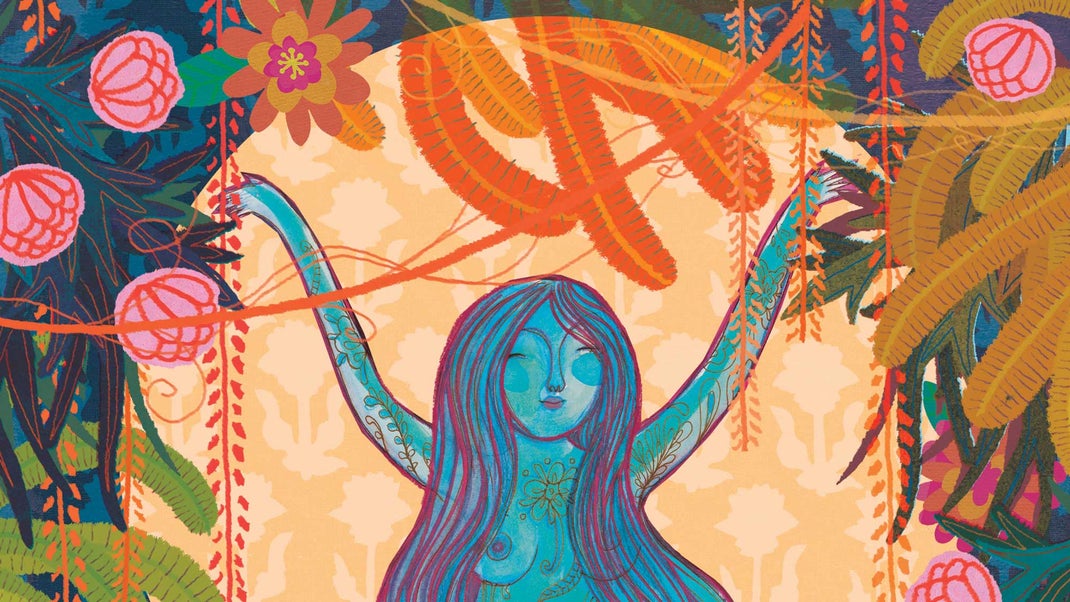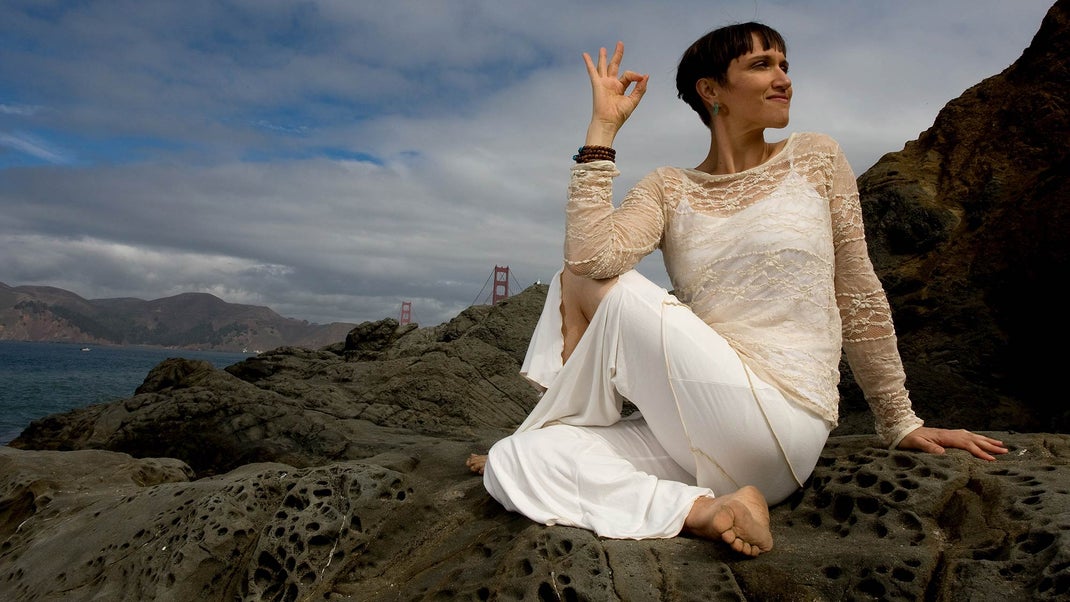Channel Durga is a powerful deity that can be used during these challenging times. Channeling her energy can help you get through any difficult time, and she will help you find the perfect solution to your problem. This article discusses how to channel Durga in order to get through challenging times!
Five years ago, Lynda opened a yoga studio in an inner-city neighborhood in a big east-coast city. A recovering alcoholic, Lynda saw the studio as her public service, a way to reach out to other young women who might otherwise lead troubled lives. She used donations as well as money from her sessions with private clients to pay the rent, and she advertised free yoga classes for high school girls. Slowly her classes filled up, often with girls who had no place to go in the afternoon after school.
Teaching these vulnerable, skeptical, wounded young women was challenging for Lynda. One night, after a particularly tough day, she dreamed of a beautiful woman mounted on a huge roaring lion. When she awoke, she realized that the image she had seen was reminiscent of Durga, the warrior goddess of Indian mythology. That day, guiding an especially restless group of girls into the Warrior sequence, she began to tell them about Durga. The girls were entranced. One of them asked Lynda to download a picture of Durga from the Internet for her. “I want to make a T-shirt,” she said. “That lady is my hero.”
“When she said that,” Lynda told me, “I realized that it was true for me, too. The image of Durga has been showing up in my dreams ever since. She’s the image I carry with me when I have to deal with my landlord or handle one of those girls when she’s disrupting the class. In some way, the image of Durga has become a symbol of the strength I need to keep this thing going.”
Lynda is not the only yogi I know who identifies with Durga. The image of this goddess riding her lion, her eight arms holding weapons and flowers, might be the avatar for empowerment and protection, especially for women. Those of us who juggle families, jobs, and yoga; who step up to support the environment; or who travel to storm-torn cities to help build housing for displaced families are living out a contemporary version of the legend of Durga. And for men as well as women, a meditation on Durga can bring forth warrior-like strength and protective compassion. When you bring her image into your inner world, she can empower your most radical aspirations and guide you through your most conflict-ridden life dramas. More than that, Durga embodies the inner power to transform yourself—to let go of addictions, obstacles, and the illusions and fears that hold you back.
Bring Goddess Power Into Your Meditation Practice with Durga
You may wonder why, as a contemporary yogi, you’d find it worthwhile to invite the energy of mythic beings into your meditation practice. The short answer is that these archetypal energies are catalysts. Meditating on deities such as Durga, Hanuman, Shiva, and Lakshmi can call forth specific powers and qualities within you. These sacred powers come to you from beyond your limited ego and can help you meet challenges, open your heart, and transcend the ordinary. For centuries, the Indian and Tibetan Tantric traditions have taught meditations and mantras for bringing deity energy into the body and mind. Goddesses are especially potent since they personify shakti, the subtle feminine force that enlivens the world, often considered the power behind spiritual growth. So practicing with the stories and mantras of one of these sacred figures can literally invite transformative energies into your life.
The images of these goddesses can serve as keys to unlocking your own inner potency. That’s because, though mythic, they are not just figments of human imagination. Goddess images represent real forces present in the universe. Their forms are extremely subtle, which is why they’re not normally apparent. Through the tales, meditations, and mantras associated with them, you can learn to sense their presence. The more you connect to them, the more palpably you can experience their inner gifts and blessings.
Just as Lakshmi is the shakti or goddess, you call on for abundance, so Durga is the shakti you call on for strength, protection, and transformation. Worshipped by the ruling families of Rajasthan for help in battle, Durga is much more than a warrior goddess. She is also the power behind spiritual awakening, the inner force that unleashes spiritual power within the human body in the form of kundalini. And she is a guardian: beautiful, queenly, and motherly.
Durga carries a spear, a mace, a discus, a bow, and a sword—as well as a conch (symbolizing creative sound), a lotus (representing fertility), and a rosary (symbolizing prayer). In one version of her origin, she arises from the combined strength of the male gods to fight the buffalo demon Mahisha. The assembled gods, furious because they are powerless over this demon, send forth their anger as a mass of light and power. It coalesces into the form of a radiantly beautiful woman who fills every direction with her light. Her face was formed out of the light of Shiva; her hair came from Yama, the god of death; Vishnu, the sustainer, gave her arms. Shiva gave her his trident, Vishnu his discus; Vayu—the wind god—offered his bow and arrow. The mountain god, Himalaya, gave her a lion for her mount. Durga sets forth to battle the demon for the sake of the world, armed with all the powers of the divine masculine.
And ever since, she has been the deity to call on when you’re in deep trouble. In the Devi Mahatmyam (Triumph of the Goddess), a medieval song cycle about Durga that is still recited all over India, she promises that she will always appear when we need her to protect our world. She invites us to turn to her in crisis and promises to move mountains to rescue us from every form of evil—including the evil we, ourselves, create!

Durga Slaying demons
In fact, in the tales of Durga, the demons she battles are not just external bad guys. They also represent the inner obstructive forces we face in our journey to enlightenment and self-actualization. So, as you read her story, think of it not just as a superhero saga but also as a parable about the process of inner work. Consider that it is showing you how to dissolve the negative energies of fear, greed, and anger so that you can stand in your essential strength and beauty. Your inner battle may not be as dramatic as this one. But it’s going on, nonetheless!
Shumbha and Nishumbha are brilliant demon brothers with magical superpowers. They’ve practiced hard austerities in order to earn a boon or benefit, from their cosmic grandfather, Brahma. The boon makes them unconquerable by men or gods, but Brahma has been careful to word the boon so that it contains a loophole: It says nothing about a goddess.
The demon brothers are soon masters of the universe. They eject the gods from the celestial regions and enslave the inhabitants of the earth. The gods are reduced to hiding in caves, plotting revenge. But finally, a sage reveals to them that the demons have a weakness.
Though Shumbha and Nishumbha can’t be conquered by anyone male, they might be vulnerable to a female warrior. So the gods travel to the mountain where Durga has her hidden dwelling to ask her for help.
As they call out to her with prayers and hymns of praise, Durga appears out of the clouds, clothed in robes whose colors shift and slip, revealing and concealing the beauty of her breasts and the curve of her belly. An erotic perfume surrounds her. She rides a lion.
In a voice like soft thunder rumbling through mountains, she agrees to intervene and restore the balance. The goddess has no sooner spoken than she has transported herself to the demon kings’ garden. Flowers drip from her fingers, and clouds form and dissolve in her hair. She is beauty personified, allurement clothed in form, enchantment itself. Within moments, the demon kings have come to their windows to look at her. They are connoisseurs of feminine beauty. Of course, they want her in their harem.
But when the palace major-domo brings the demons’ proposal to Durga, she smiles. “There is just one difficulty,” she explains. “In my girlhood, I took a silly vow that I would only marry a man strong enough to defeat me in battle. You know how girls are—full of fantasy and romantic notions. But a vow is a vow. If your masters really want me, they’ll have to fight with me.”
“Lady, you are either mad or suicidal,” says the major-domo. “No one has ever defeated my masters.”
“Nonetheless, that is my condition,” says Durga, giving him such a languorous glance that he feels stirrings of lust in every part of his body. “And if your masters are afraid to do battle, I am happy to take on their army.”
Which she does. In an intense battle, the goddess defeats battalion after battalion. At one point, a host of goddesses emerge from her body, including the fearsome Kali. Together, the goddesses destroy the entire demon army, leaving only the brothers. Shumbha advances upon Durga.
“You said that you would fight my army single-handed,” shouts Shumbha in a voice so loud it shakes the nearby hills to powder. “But you had helpers. Your challenge is forfeit.”
“Not so,” roars the goddess, vibrating the sky with celestial thunder. “These goddesses are parts of me.” The other goddesses melt back into her form, leaving just Durga, shining with an almost blinding light.
The goddess’s eight-armed form swells until it fills the sky. Twirling her greatswords like a baton in one hand and her axes, maces, spears, and crossbows in the others, she flies through the air and slays the demon kings.
“Ma,” says Shumbha with his dying breath, and then a smile comes over his face as the ecstasy of the goddess fills his being. In that instant, both demons are transfigured, dissolving into Durga’s body and dying into the mystery. When the ego dissolves, even the most demonic soul comes home, back to the heart of the mother. Durga returns to her mountain home, promising to return when there is a need for her help.
How to use Durga to let go of ego
This tale makes sense on several levels. From the point of view of the environment, it’s a story about the unstoppable power of nature. From another perspective, it assures us that higher powers will protect us when we take refuge in them. But on the esoteric level, the Durga story is about the transformation of the ego. The mighty battle between Durga and the demons is the inner struggle that invariably begins when we undertake real transformative practice.
Like those demon kings, the ego enters into a spiritual practice with its own secret agenda. Egos seek to control—control over circumstances, control over the body, and control over the people around us. Power and mastery are what matter to the ego. So, naturally, the ego will resist surrendering to higher powers, letting go of its agendas, or giving up control on any level. But shakti has a different agenda. She wants to move us away from egocentric consciousness and recognize our fundamental oneness with one another and the cosmos. To do this, she must put the ego in its place and ultimately dissolve it. The ego, however, will fight her to the death.
The demons personify the more primitive and intransigent forces of ego. They are the parts of us that unabashedly crave power over others. The demonic part of the self sees everything and everyone, including the higher powers of the universe, as tools that serve the ego’s personal agendas. The gods, as we’ve mentioned, also represent aspects of the self, but they represent the authentic Self, the unique personal qualities of the essence. The devas represent our love, our dedication, our good intentions, and the forgiveness and compassion we display when we’re aligned with the higher Self. Durga arrives in our inner world to strengthen those higher qualities, whether for the sake of accomplishing good in the world or for progress on the spiritual path.
As postmodern practitioners, we usually prefer to take a gentler attitude toward our dark side. Most of us long ago rejected authoritarian religion, with its talk of sin and insistence on eliminating the darker forces within us.
If we are practitioners of a path that emphasizes our innate goodness, we might prefer to ignore the negative qualities in the self on the principle that fighting the ego only strengthens it. If we’re psychodynamically oriented, we might be interested in bringing our shadow qualities into the light so we can integrate the power tied up in anger or greed, or pride. If we are walking a nondual path, we may feel that all struggle has to be given up, since everything is ultimately one.
All these approaches are useful, some on the level of personality, others as part of the practice for enlightenment. But there are moments when the only way to put our narcissism in its place is with a sword—the sword of wisdom wielded by a warrior who takes no prisoners. This is Durga’s role, whether she is operating in the outer world or the inner world.
In my life, the energy of the warrior goddess with her upraised sword shows up to remind me to get my striving, performance-oriented ego out of the way so that the deeper power can unfold my life according to her evolutionary imperative. Durga, in my inner world, is the unstoppable energy of spiritual growth. When I resist that, I often encounter an unexpected setback. She might get in my face as a kind of cosmic “No!” to my personal agendas—and then manifest as the deeper awakening that follows when I am able to let them go.
Over the years, I’ve been through this cycle often. At times, egoic illusions grow bigger, pile up, and take over my world—until, like a river in springtime, they become so swollen that they must come bursting forth. Then, nearly always, I hear the roar of the goddess’s lion sounding through my dreams.
Perhaps Durga shows up to guide me through an impasse. Maybe I’ll make some horrific mistake, and she’ll appear to help me navigate the consequences. More and more, I’ve learned in those moments to bow to her in order to spare myself the pain that comes from resistance to the shakti’s agenda for my growth.
Whenever you feel caught in one of those moments—when your personal will seems blocked by immovable obstacles—consider that it might be a signal from the shakti. Then, try sitting for a few minutes in meditation and using your imagination to bring yourself into the presence of Durga.
Finding Your Ferocity with Durga
One of the most powerful practices for connecting with the goddess is to imagine that with each inhalation, you draw in her loving, protecting, empowering energy, and with each exhalation, you breathe her energy through your body. As in so much yoga practice, the breath is the bridge between our physical self and the subtle energies of the invisible worlds. When you invoke Durga, you may very well feel her as heightened energy. But connecting to Durga’s energy is just as likely to result in a subtle feeling of greater insight, in a feeling of being supported with the strength to carry on during a hard time, or in the strategic instinct that helps you win your battles. This can happen so subtly that it’s only in hindsight that you realize you were being supported. And this can happen in surprising ways.
Sasha, a lawyer and the mother of two girls, first discovered the Durga shakti when her daughter Lee began failing in school. It turned out that Sasha’s husband, Lee’s father, was engaging his daughter sexually. Sasha vowed that, whatever it took, she would protect her daughters. She filed for divorce, insisting that her husband not be allowed unsupervised visits with their girls. He fought hard for joint custody, deploying a high-powered legal team. (Though a lawyer herself, Sasha’s field is wills and trusts, and she had never litigated.)
In the midst of this, Sasha took a class I was teaching on the goddesses. She felt an immediate affinity for Durga and created a meditation in which she imagined Durga’s strength inside her own body. She would visualize each of Durga’s eight arms holding a particular power. On one hand, she imagined the power to use words skillfully. In another, the power to read financial statements with care. In another, the skill to face down her husband’s lawyers. She imagined all of Durga’s weapons as energies empowering her to protect her two daughters.
She won the case and, soon afterward, realized that an enormous weight had been lifted from Lee. The fact that Sasha had fought on her daughter’s behalf seemed to give the teenager a sense of purpose and a new understanding of her own feminine strength.
Like Sasha, any one of us can tune into our personal Durga strength by invoking the goddess’s energy and wisdom. As you do, you’ll likely discover your personal capacity for warrior-style leadership. Anyone in touch with her inner Durga will naturally create zones of protection around the people in her life. (Durga is also an effortless multi-tasker, like a mother who manages three children while cooking a five-course meal—or an executive running a team of diverse employees.)
The Durga woman makes space for people to flourish, fighting their battles when needed—as Sasha did for her daughters—but she is just as likely to push them into fighting for themselves.
Answer Durga’s Call to Lead
One way to feel a sense of the Durga shakti is to remember a moment when you recognized, from the deepest place inside you, that something was wrong, that it had to change. If that recognition comes from the Durga shakti, it goes beyond mere frustration or cognitive awareness of a social problem. Durga’s transformative power carries a conviction that comes from deep inside the body, and with it often comes a sense of “Now!”—meaning the time is now. When that sense is strong enough, it is followed by action. You will put your body and your speech on the line to change the situation, whether it’s internal or external.
One of my Durga friends in Los Angeles noticed that her son’s asthma was activated when local crops were being sprayed for pests. She organized a group of mothers to protest aerial spraying in her area, and after several years, the group not only had it banned in Los Angeles but also had the pesticide removed from circulation entirely. Now, along with her day job as a psychotherapist, she runs an environmental group focused on lobbying against airborne pesticides.
The same power of purposeful action can be invoked when you need the will to change a deep-seated habit or addiction, carve out time for practice, or to follow an inner calling. The Durga Shakti can give you the power to face parts of yourself that stand in the way of your evolution, but she can also show you how to speak up for yourself when you need to ask for a raise, face a challenge, or take on a difficult responsibility—in short, to set things right.
The more you invite Durga’s energy into your life, the more you’ll feel her opening you to your inner warrior. Her power guards your highest aspirations, and she promises never to let you down.
Conclusion:
Channel Durga during challenging times to tap into a warrior-like strength that can help you face any challenge with grace and ease. Channeling the goddess’s energy will also give you a sense of purposeful action, often taking shape as physically demanding tasks like protesting airborne pesticides or carving out time for practice. The more you call on her shakti, the stronger your resolve becomes in standing up for yourself when needed.




